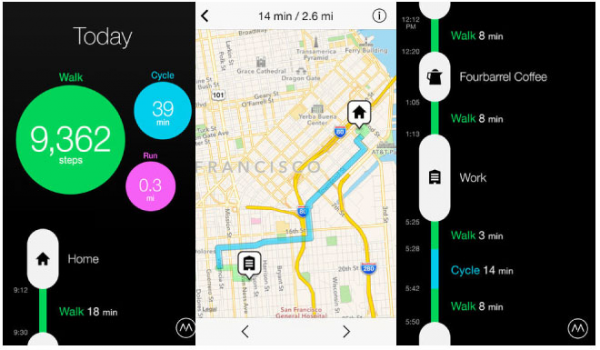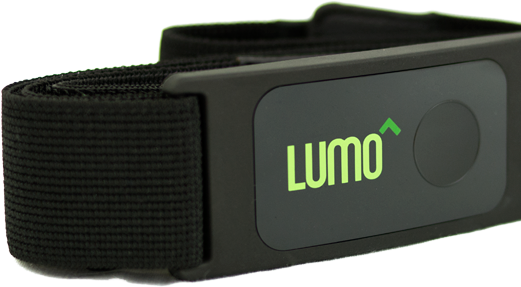As an engineer, I was easily hooked on the idea that you could measure and improve yourself through data - Quantified Self (QS) is the movement that captures that ethos. Over the years, I’ve used physical notebooks, spreadsheets, and various Google docs to track weight, body fat percentage, running and sleeping habits in an ongoing effort to quantify and optimize myself.
The BestFit Experiment
Last summer, I took this further and built a tool called BestFit to make tracking even simpler. BestFit users log discrete activities such as Going to Bed, Eating, Drinking by simply tapping a button on their phone. Then the app looked for actionable insights from those data points. I used BestFit alongside the Moves App, and a WiiThings Pulse to level up my QS and test a few hypotheses regarding this space.

While QS tools have the power to make a meaningful difference in people’s lives - majority of these tools end up in the junk drawer after only 6 months. These key learnings from the experiment last summer can help wearables manufacturers change the user experience and keep users engaged beyond the initial honeymoon period.
Key Learnings from the BestFit Experiment
1. Make Data Collection Automatic.
It turns out, people are notoriously bad at consistent self-tracking. A study by the Pew Research Center found that of people with two or more chronic diseases who track health markers, only about 54% do so regularly. This number drops another 11% for people without chronic diseases - i. e. Almost 60% of the people who say they track their health don’t do so regularly.
I found the automatic tracking from WiiFit and Moves App to be much more consistent than the manual tracking in BestFit. Moves, in particular was a clear winner, since it required little to no interaction and collected data on activity, location (how many times did you stop at McDonalds vs. the Farmers Market), and motion regularly.

Make data collection automatic. Device designers should stop requiring people to put devices into “modes” (eg: fitbit sleep mode) or asking them to remove devices from housing to access certain functions (e.g.: WiiThings Pulse Tracker that requires you to remove it from its case to measure heart rate.
2. Deliver Insights, Not Data.
The current generations of wearables are still very focused on accurate data collection and have been packing on additional arrays of sensors for added real-time data collection.
Once users get past the benefits of the Hawthorne effect gained from checking in every cup of coffee and logging every dumbell curl, as the previous Fast Company article points out, most of this real-time data turns into digital noise and the devices end up unused.

Turning data into actionable insights, on the other hand, keeps users engaged for the long term. For example, most food tracking applications ask you track detailed information such as grams of food, calories and other tedious particulars of each meal. In BestFit, I took the opposite approach. I simply selected one of three buttons -Ate Well, Ate Reasonably or Ate Poorly. With this high-level data, I learned that not eating for more than 4.5 hrs. made me more likely to make poor food decisions. A food tracking app can use this insight to provide daily reminders when the user does not eat for specified interval. This keeps users engaged long after the data feeds and summaries have lost their appeal.
Designers need to rethink their approach to the products to deliver insights rather than simply collecting data. Data creates fleeting interest but insights create lasting engagement.
3. Drive Immediate, Small, Actions that Add Up.
Change is hard. Especially when it involves foundational behaviors like exercise, eating or sleeping, that have become ingrained over years. Dan and Chip Heath, Authors of the New York Times and Wall Street Journal Best Seller Switch: How to Change Things When Change Is Hard advocate that to make the change stick we have to minimize the change. Good Quantified Self product designers know and embrace this.

A great example of this in a product is the LumoBack, a small low back wearable that improves your posture. Once calibrated the device gives you a quick buzz when you start to slouch. The realtime reminder to straighten up, get up or stand up and move around is a small action that can be completed in seconds by the user - making the change easy and small.
Build your product experience around immediate quick wins for the user. Engage and motivate her to achieve those wins. Maintain the user enthusiasm for the immediate action by showcasing and celebrating her heroic progress towards her goals in the UI.
If You Make It Useful - They Will Use It.
These three simple principles have the power to significantly change user engagement with wearables and help product teams deliver on their promise of changing the world. As a consumer - I am eagerly looking forward to the next generation of software and user experiences which leverage these ideas and make wearables useful.
Many thanks to Deepika Yerragunta for comments on an earlier draft.


